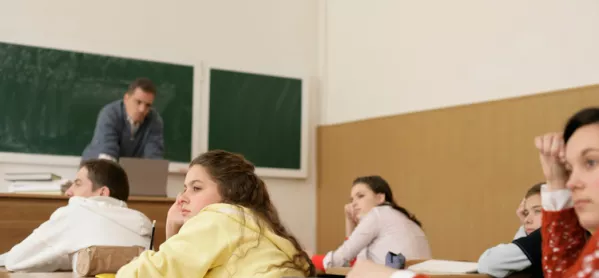If you are looking for reasons behind student disengagement, then it may be helpful to consider the teaching techniques that are being applied in classrooms.
For a recent study, I looked into the causes of why students lose attention in classrooms - daydreaming, fidgeting, talking to their friends - and my findings suggest the root cause may be how teachers apply psychological pressure.
Leaving students in the dark
This pressure could be threatening students with punishment - for example, telling them they’ll have to miss their break time if they don’t get their work done.
It could be in the form of using guilt or shame to pressure students to do the work - such as saying, “this is easy, you should be able to do this.”
It could even be as simple as telling students to do activities without fully explaining why they are doing them or what their purpose is.
We found that such pressuring tactics were associated with disengagement.
It’s understandable that, with the stresses of the curriculum and performance targets, it can be easy for teachers to succumb to pressurising students in order to get work done. But even if this pressure is applied with well-meaning intentions, it is likely to be counterproductive and disengage the students further.
Different types of disengagement
The type of disengagement displayed by students depended on how they felt, and this is important for teachers to recognise in order to re-engage the student. Those who felt incapable or like a failure in class reported having less energy: they passively disengaged through becoming withdrawn or daydreaming.
In comparison, those who felt forced to do the activities - they didn’t want to do them and didn’t understand why they had to - had more energy but were more actively disengaged through messing about and arguing with others.
Although this was a small study looking at only three schools, it did include different types of schools - both grammar and comprehensive. The findings were also consistent across school subject, gender, ethnicity and pupil background.
However, I would like to extend the study to see the long-term effects of psychological pressure, and also how different learning or behavioural disorders - such as autism - may influence disengagement.
Re-engaging pupils
So what advice would I give to teachers based on this study?
You can still tell students to do the activity, but this must be coupled with an explanation of why they need to do it - what’s its relevance to the student and their studies? This can prevent the students from feeling forced to do the activity, and in turn will reduce disengagement with the task.
It is also important that teachers not only explain what work needs to be done, but also help the students to identify ways to complete the work. As shown in the research, if students do not understand how to complete the work, they are likely to disengage.
Finally, teachers must be open to - and aware of - the opinion of their students. While I understand this can be difficult in large classes, teachers can be aware of and recognise the different types of disengagement described above and take the appropriate steps to re-engage these pupils.
Dr Stephen Earl is a research associate at the University of Kent, in conversation here with Georgia Ziebart
Want to keep up with the latest education news and opinion? Follow Tes on Twitter and like Tes on Facebook
